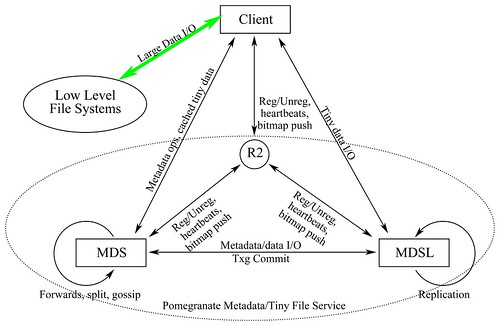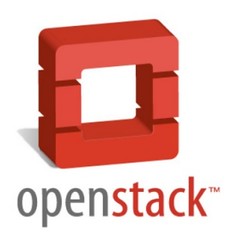What’s New in Apache Hadoop 0.21: "
Apache Hadoop 0.21.0 was released on August 23, 2010. The last major release was 0.20.0 in April last year, so it’s not surprising that there are so many changes in this release, given the amount of activity in the Hadoop development community. In fact, there were over 1300 issues fixed in JIRA (
Common,
HDFS,
MapReduce), the issue tracker used for Apache Hadoop development. Bear in mind that the 0.21.0 release, like all dot zero releases, isn’t suitable for production use.
With such a large delta from the last release, it is difficult to grasp the important new features and changes. This post is intended to give a high-level view of some of the more significant features introduced in the 0.21.0 release. Of course, it can’t hope to cover everything, so please consult the release notes (
Common,
HDFS,
MapReduce) and the change logs (
Common,
HDFS,
MapReduce) for the full details. Also, please let us know in the comments of any features, improvements, or bug fixes that you are excited about.
You can download Hadoop 0.21.0 from an
Apache Mirror. Thanks to everyone who contributed to this release!
Project Split
Organizationally, a significant chunk of work has arisen from the project split, which transformed a single Hadoop project (called Core) into three constituents:
Common,
HDFS, and
MapReduce. HDFS and MapReduce both have dependencies on Common, but (other than for running tests) MapReduce has no dependency on HDFS. This separation emphasizes the fact that MapReduce can run on alternative distributed file systems (although HDFS is still the best choice for sheer throughput and scalability), and it has made following development easier since there are now separate lists for each subproject. There is one release tarball still, however, although it is laid out a little differently from previous releases, since it has a subdirectory containing each of the subproject source files.
From a user’s point of view little has changed as a result of the split. The configuration files are divided into
core-site.xml,
hdfs-site.xml, and
mapred-site.xml (this was supported in 0.20 too), and the control scripts are now broken into three (
HADOOP-4868): in addition to the
bin/hadoop script, there is a
bin/hdfs script and a
bin/mapreduce script for running HDFS and MapReduce daemons and commands, respectively. The
bin/hadoop script still works as before, but issues a deprecation warning. Finally, you will need to set the
HADOOP_HOME environment variable to have the scripts work smoothly.
Common
The 0.21.0 release is technically a minor release (traditionally Hadoop 0.x releases have been major, and have been allowed to
break compatibility with the previous 0.x-1 release) so it is API compatible with 0.20.2. To make the intended stability and audience of a particular API in Hadoop clear to users, all Java members with public visibility have been marked with
classification annotations to say whether they are
Public, or
Private (there is also
LimitedPrivate which signifies another, named, project may use it), and whether they are
Stable,
Evolving, or
Unstable (
HADOOP-5073). Only elements marked as
Public appear in the user Javadoc (
Common, MapReduce; note that HDFS is all marked as private since it is accessed through the
FileSystem interface in Common). The classification interface is descibed in detail in
Towards Enterprise-Class Compatibility for Apache Hadoop by Sanjay Radia.
This release has seen some significant improvements to
testing. The
Large-Scale Automated Test Framework, known as Herriot (
HADOOP-6332), allows developers to
write tests that run against a real (possibly large) cluster. While there are only a dozen or so tests at the moment, the intention is that more tests will be written over time so that regression tests can be shared and run against new Hadoop release candidates, thereby making Hadoop upgrades more predictable for users.
Hadoop 0.21 also introduces a
fault injection framework, which uses AOP to
inject faults into a part of the system that is running under test (e.g. a datanode), and asserts that the system reacts to the fault in the expected manner. Complementing fault injection is mock object testing, which tests code “in the small”, at the class-level rather than the system-level. Hadoop has a growing number of
Mockito-based tests for this purpose (
MAPREDUCE-1050).
Among the many other improvements and new features, a couple of small ones stand out: the ability to
retrieve metrics and configuration from Hadoop daemons by accessing the URLs
/metrics and
/conf in a browser (
HADOOP-5469,
HADOOP-6408).
HDFS
Support for
appends in HDFS has had a rocky history. The feature was introduced in the 0.19.0 release, and then disabled in 0.19.1 due to
stability issues. The good news is that the append call is back in 0.21.0 with a brand new implementation (
HDFS-265), and may be accessed via
FileSystem’s
append() method. Closely related—and more interesting for many applications, such as HBase—is the
Syncable interface that
FSDataOutputStream now implements, which brings sync semantics to HDFS (
HADOOP-6313).
Hadoop 0.21 has a
new filesystem API, called
FileContext, which makes it easier for applications to work with multiple filesystems (
HADOOP-4952). The API is not in widespread use yet (e.g. it is not integrated with MapReduce), but it has some features that the old
FileSystem interface doesn’t, notably support for
symbolic links (
HADOOP-6421,
HDFS-245).
The
secondary namenode has been deprecated in 0.21. Instead you should consider running a
checkpoint node (which essentially acts like a secondary namenode) or a
backup node (
HADOOP-4539). By using a backup node you no longer need an NFS-mount for namenode metadata, since it accepts a stream of filesystem edits from the namenode, which it writes to disk.
New in 0.21 is the
offline image viewer (oiv) for HDFS image files (
HADOOP-5467). This
tool allows admins to analyze HDFS metadata without impacting the namenode (it also works with older versions of HDFS). There is also a
block forensics tool for finding corrupt and missing blocks from the HDFS logs (
HDFS-567).
Modularization continues in the platform with the introduction of
pluggable block placement (
HDFS-385), an expert-level interface for developers who want to try out new placement algorithms for HDFS.
Other notable new features include:
- Support for efficient file concatenation in HDFS (HDFS-222)
- Distributed RAID filesystem (HDFS-503) – an erasure coding filesystem running on HDFS, designed for archival storage since the replication factor is reduced from 3 to 2, while keeping the likelihood of data loss about the same. (Note that the RAID code is a MapReduce contrib module since it has a dependency on MapReduce for generating parity blocks.)
MapReduce
The biggest user-facing change in MapReduce is the status of the
new API, sometimes called “context objects”. The new API is now more broadly supported since the MapReduce libraries (in
org.apache.hadoop.mapreduce.lib) have been ported to use it (
MAPREDUCE-334). The examples all use the new API too (
MAPREDUCE-271). Nevertheless, to give users more time to migrate to the new API, the old API has been un-deprecated in this release (
MAPREDUCE-1735), which means that existing programs will compile without deprecation warnings.
The
LocalJobRunner (for trying out MapReduce programs on small local datasets) has been enhanced to make it more like running MapReduce on a cluster. It now supports the
distributed cache (
MAPREDUCE-476), and can
run mappers in parallel (
MAPREDUCE-1367).
Distcp has seen a number of small improvements too, such as
preserving file modification times (
HADOOP-5620),
input file globbing (
HADOOP-5472), and
preserving the source path (
MAPREDUCE-642).
Continuing the testing theme, this release is the first to feature
MRUnit, a contrib module that helps users write unit tests for their MapReduce jobs (
HADOOP-5518).
Other new contrib modules include
Rumen (
MAPREDUCE-751) and
Mumak (
MAPREDUCE-728), tools for modelling MapReduce. The two are designed to work together: Rumen extracts job data from historical logs, which Mumak then uses to simulate MapReduce applications and clusters on a cluster.
Gridmix3 is also designed to work with Rumen traces. The
job history log analyzer is another tool that gives information about MapReduce cluster utilization (
HDFS-459).
On the job scheduling front there have been updates to the Fair Scheduler, including
global scheduling (
MAPREDUCE-548),
preemption (
MAPREDUCE-551), and support for
FIFO pools (
MAPREDUCE-706). Similarly, the Capacity Scheduler now supports
hierarchical queues (
MAPREDUCE-824), and admin-defined
hard limits (
MAPREDUCE-532). There is also a brand new scheduler, the Dynamic Priority Scheduler, which
dynamically changes queue shares using a pricing model (
HADOOP-4768).
Smarter speculative execution has been added to all schedulers using a more robust algorithm, called
Longest Approximate Time to End (LATE) (
HADOOP-2141).
Finally, a couple of smaller changes:
- Streaming combiners are now supported, so that the
-combiner option may specify any streaming script or executable, not just a Java class. (HADOOP-4842)
- On the successful completion of a job, the MapReduce runtime creates a _SUCCESS file in the output directory. This may be useful for applications that need to see if a result set is complete just by inspecting HDFS. (MAPREDUCE-947)
What’s Not In
Finally, it bears mentioning what didn’t make it into 0.21.0. The biggest omission is the new Kerberos authentication work from Yahoo! While a majority of the patches are included, security is turned off by default, and is unlikely to work if enabled (certainly there is no guarantee that it will provide any level of security, since it is incomplete). A full working security implementation will be available in 0.22, and also the next version of
CDH.
Also, Sqoop, which was initially developed as a Hadoop contrib module, is not in 0.21.0, since it was moved out to become a standalone open source project
hosted on github.
"






















